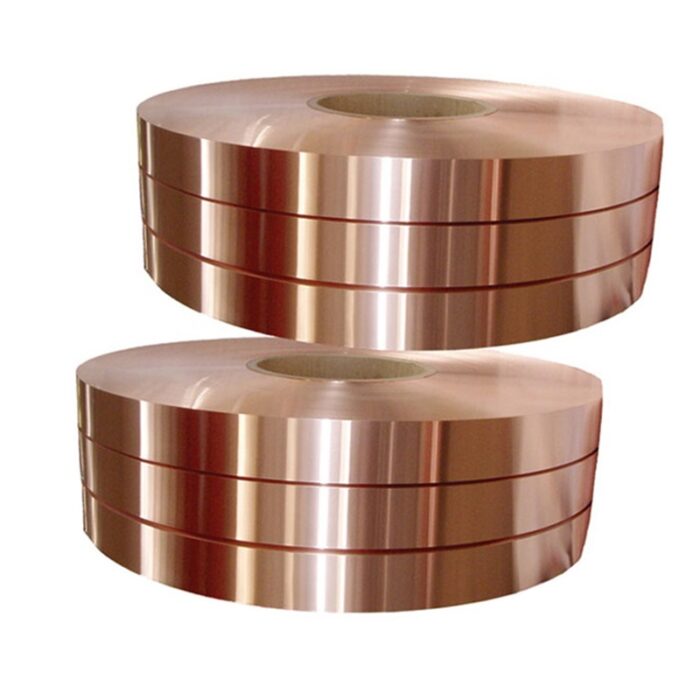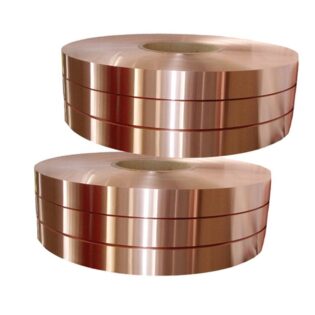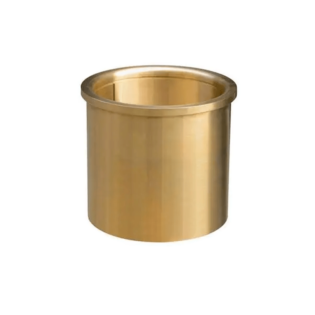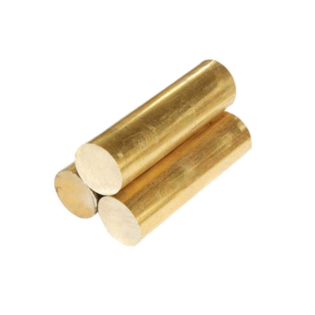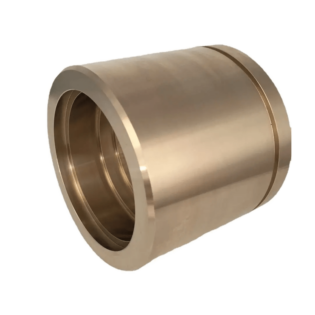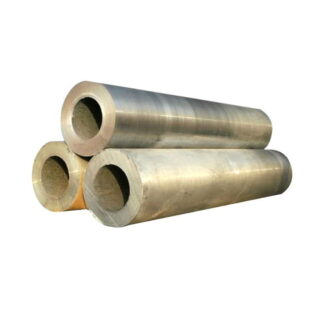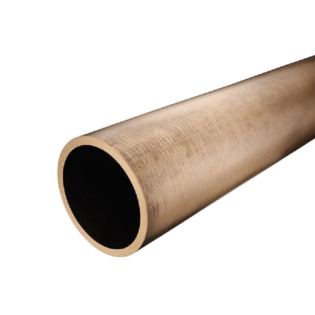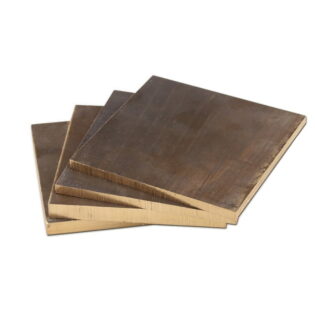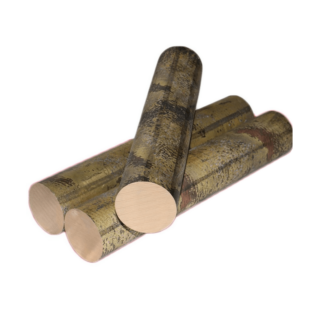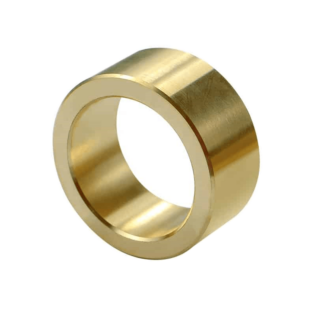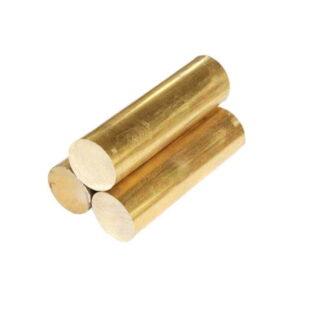Qsn6.5-0.4 has high strength, elasticity, wear resistance and diamagnetization, good pressure processing under hot and cold states, high fire resistance to electric spark, welding and brazing, good machinability, corrosion resistance in air and fresh water. Because of high phosphorus content, its fatigue strength resistance is high, elasticity and wear resistance is good, but in hot processing has hot brittleness, can only accept cold pressure processing.
Tin bronze QSn6.5-0.4 Alloy grade
| |
Lion standard | QSn6.5-0.4 |
| QSn6.5-0.4 |
American standard | C51900 |
Japanese standard | C5191 |
Chemical composition (weight percent)
| |
Sn | 6.0-7.0 |
P | 0.26-0.4 |
With | margin |
Sum of impurities | ≤ 0.4 |
Physical properties (room temperature)
| | |
Conductivity | 10 | %IACS |
Conductivity | 5.8 | MS/m |
Thermal conductivity | 83.7 | W/(m.K) |
Thermal expansion coefficient | 17.0 | 10 -6 / K |
density | 8.8 | g/cm3 |
Elastic Modulus | 112 | GPa |
specific heat capacity | 380 | J/(g.K) |
Poisson’s ratio | 0.33 | — |
Process performance
| |
Cold workability | Excellent |
Machinability | Generally |
Electroplating | Excellent |
Hot-dip tinning | Excellent |
Solderability | Excellent |
Resistance welding | Good |
Typical use
It is used to make springs and spring contact pieces with good conductivity, wear-resistant parts and anti-magnetic parts in precision instruments, such as gears, brush boxes , vibrating plates, contactors, etc.
Mechanical behavior | | | | |
State | Tensile Strength ( MPa ) | Elongation ( A 11.3 , % ) | Vickers hardness | |
M | O60 | ≥ 295 | ≥ 40 | ≥ 100 |
AND | H04 | 540-690 | ≥ 8 | 170-200 |
T | H06 | ≥ 665 | ≥ 2 | ≥ 190 |
Thickness tolerance
| | | | | | |
Thickness ( mm ) | 0.08-0.15 | >0.15-0.20 | >0.2-0.3 | >0.3-0.4 | >0.4-0.6 | >0.6-0.8 |
Tolerance ( mm ) | ± 0.0025 | ± 0.004 | ± 0.005 | ± 0.0075 | ± 0.01 | ± 0.0125 |
Thickness ( mm ) | >0.8-1.2 | >1.2-1.5 | >1.5-2.0 | >2.0-2.6 | >2.6-3.0 | >3.0-4.0 |
Tolerance ( mm ) | ± 0.015 | ± 0.02 | ± 0.025 | ± 0.03 | ± 0.04 | ± 0.05 |
Width tolerance
| | | | | | |
Thickness ( mm ) | 0.08-0.5 | >0.5-1.0 | >1.0-1.8 | >1.8-3.0 | >3.0-4.0 | |
Width and Tolerance (mm) | ≤ 50 | ± 0.05 | ± 0.08 | ± 0.1 | ± 0.2 | ± 0.3 |
| >50-100 | ± 0.075 | ± 0.1 | ± 0.15 | ± 0.2 | ± 0.3 |
| > 100 | ± 0.1 | ± 0.15 | ± 0.2 | ± 0.3 | ± 0.5 |
Glitch
| |
Thickness ( mm ) | Edge Burr ( mm ), no greater than |
≤ 0.50 | 0.02 |
>0.50-1.0 | 0.04 |
>1.0-2.0 | 0.05 |
>2.0-4.0 | 0.1 |
Bending performance | | | | |
Condition | Minimum Bend Inside Radius ( mm ) | | | |
| Thickness /t : 0.15-0.30mm | Thickness /t : 0.30-1.0mm | | |
| Good direction | Bad direction | Good direction | Bad direction |
O60 | 0 × t | 0 × t | 0 × t | 0 × t |
H04 | 0 × t | 0.5 × t | 0 × t | 1.0 × t |
H06 | 0 × t | 2.0 × t | 1.0 × t | 2.5 × t |
Surface roughness
| |
Ra (μ m ) | ≤ 0.3 |
Side curvature h ( mm/m ) | | | |
| width ( mm ) | Thickness ( mm ) | | |
| 0.08-0.6 | >0.6-2.0 | >2.0-4.0 |
≤ 9 | ≤ 1.0 | ≤ 1.0 | — |
>9-13 | ≤ 1.0 | ≤ 1.0 | — |
>13-25 | ≤ 1.0 | ≤ 1.0 | — |
>25-50 | ≤ 1.5 | ≤ 1.0 | — |
>50-100 | ≤ 1.5 | ≤ 1.5 | — |
>100-625 | ≤ 1.5 | ≤ 1.5 | — |
Lateral curvature
| | | |
Width L ( mm ) | ≤ 50 | >50-200 | >200-625 |
Transverse curvature h ( mm ), not more than | 0.01 × L | 0.015 × L | 0.02 × L |
Longitudinal flatness (serpentine)
| | |
width ( mm ) | ≤ 100 | >100-625 |
Longitudinal straightness h ( mm/m ) | ≤ 3 | ≤ 5 |
Twist
| | | |
Width ( mm ) | ≤ 30 | >30-100 | >100-625 |
Torsion (°) | ≤ 10 | ≤ 5 | — |
Warpage
| | | |
Width ( mm ) | ≤ 100 | >100-300 | >300-625 |
Warpage h ( mm/m ) | ≤ 50 | ≤ 100 | — |
C17200 Beryllium Copper
T2 Copper Strip
Tin Bronze CuSn4
QSn 6.5-0.1 Tin bronze

